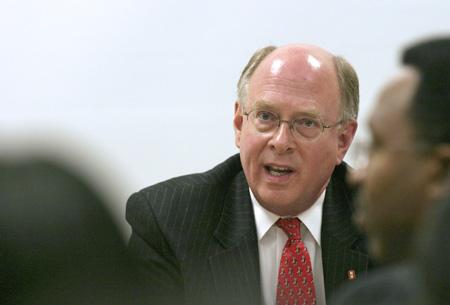Tensions flared at Friday afternoon’s African American Student Advisory Council meeting where students and administrators met to discuss the toilet paper noose found in Sullivan Shops on Nov. 8.
According to Campus Police Chief Tom Younce, the investigation is under way.
“To date, we’ve interviewed 60 people and put in 105 man hours,” he said.
The case, Younce said, is now under the supervision of the district attorney.
But several members of the black community were not satisfied with the University’s response to the incident.
Robert Waldrup, a senior in meteorology, said the incident was not one to be taken lightly.
“My first reaction was anger, given the events and the nooses that have popped up around the nation,” he said.
Waldrup said he expected cynicism from the campus and that’s exactly what happened.
Rev. William Barber of the NAACP North Carolina Chapter said whoever hung the noose was committing an act of domestic and psychological terrorism.
He and various student leaders agreed that until the University required its students to learn about historical contexts and quit being “ahistorical,” the graveness of such situations would not be understood.
Chancellor James Oblinger said he received mixed responses about the press release he sent out after the incident.
“I learned a lot about a certain five-letter word — prank,” Oblinger said.
Although Oblinger said the investigation is ongoing, and if the University can determine who made the noose, that person would be appropriately dealt with.
He said it would hard to find out who did it because of the material the noose was made of.
Jose Picart, vice provost for diversity and African American Affairs, said the University is working to promote diversity.
“We hope in 2009, we’ll have a general education requirement that requires diversity education for every student,” he said.
But some students said they were skeptical.
Waldrup said the course shouldn’t just be a diversity course, but a curriculum that explores the institution of racism, the meaning behind such symbols as the noose, knowledge on the race riots and the understanding that racism still exists today.
According to Barber, the act is more than a sensational one, but one of domestic terrorism.
“It’s the continued saga of a racist mentality that is not just sensational, but seeps into the soul of public policy,” Barber said.
Barber, among others in the audience, pushed for the University to be among the first to create specific policies admonishing hate crimes.
At its meeting Wednesday, the Student Senate passed a bill urging the University to do this.








